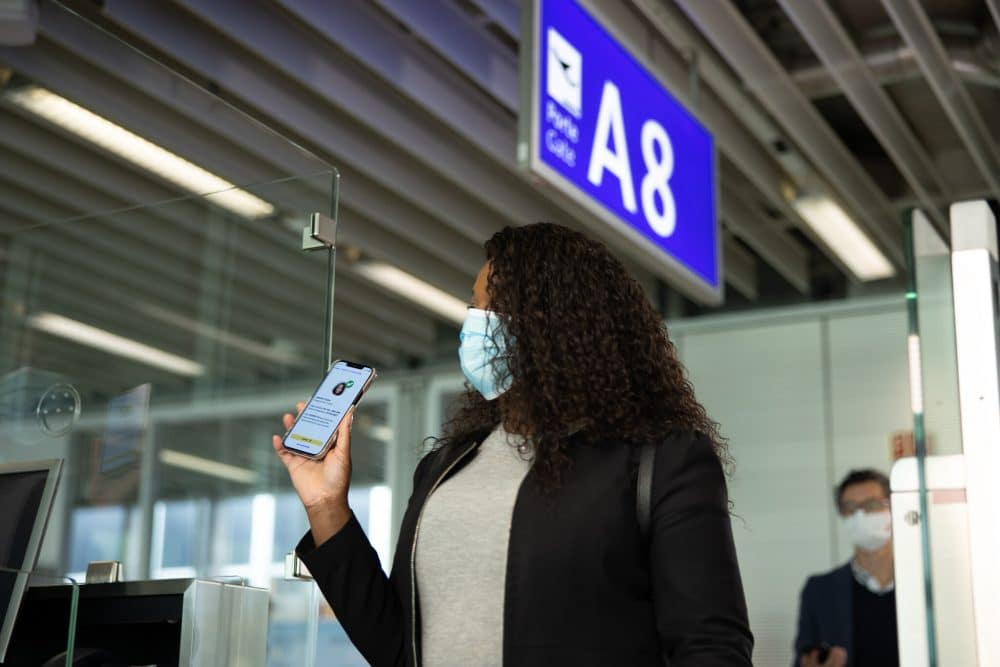
Tomorrow, 12 August, marks a month since Ireland began sending out the EU EU Digital COVID Certificate (DCC). So how’s it all going?
After a couple of early stumbles, the DCC system is now running pretty smoothly.
As of yesterday (10 August), 2.994 million certificates have been issued. After a few early disasters, the helplines are working more effectively and the government has established a self-service portal to deal with most queries related to the DCC.
But despite every effort to make the system be straightforward and go smoothly, it’s all still a bit confusing – for travel professionals as much as the ordinary citizen who only wants to travel!
Here’s the latest lowdown.
What is it Again?
The EU Digital COVID Certificate (DCC) is a free document designed to help EU citizens and legal residents move freely and safely within the EU during the COVID-19 pandemic.
It is proof that you have either:
- Been vaccinated against COVID-19;
- Received a negative test result; or
- Recovered from COVID-19 in the last 6 months
You can get a free EU Digital COVID Certificate from the EU country where your vaccination or COVID-19 test took place. You don’t have to be a citizen of that country.
The DCC is available in both digital and paper formats. The certificate has a QR code to avoid fraud.
What Information Does it Contain?
The certificate only contains necessary key information:
- Your name
- Your date of birth
- The date of issue
- Relevant information about your vaccine or test or recovery
- A unique identifier number
How Do I Get It?
If you have been fully vaccinated you will automatically be sent your DCC, either by email or by post.
I’ve Recovered from Covid; How Do I get the DCC?
If you’ve had a positive PCR test in the last six months (180 days) but no later than 11 days ago, you can request a Recovery Certificate, which is another form of the DCC and proves that you have recovered from Covid-19.
You can request the certificate from the new, dedicated self-service portal launched by the government.
There’s a Mistake on my DCC! How Do I Get it Fixed?
Don’t worry, you can amend any detail on the government’s dedicated self-service portal, or you can call one of two helpline numbers: 1800 851 504 or 1800 807 008
This Government Portal Sounds Like a Very Helpful Tool?
It is – if only because it sorts out all of the early issues that bedevilled the issuance of the DCC.
You can use the portal to:
- Change details on your EU DCC
- Get a copy of your EU DCC resent to you
- Check the status of your EU DCC if you have not received it
- Request a certificate of recovery
Do I need any other documents?
Besides your passport? Along with the DCC, every EU country requires that you fill in a passenger locator form (PLF) for the destination before you depart. You won’t be allowed check in for your flight if you haven’t completed one.
You must fill in the form online (usually within 72 or 48 hours of departure), and once you’re done, a completed version will be emailed to you – and you must show that email receipt as you board.
Please refer to Re-Open EU (europa.eu) for exact details; here’s a link to the Irish PLF – which you must fill in before returning to Ireland.
Ok, I Have my DCC; Now What’s the Story with Travelling Around Europe?
The (very) good news is that with the DCC and PLF in your hand (or on your phone) you’re free to travel to any country in the EU (plus Iceland, Norway, Lichtenstein and Switzerland).
All you have to do is present the DCC and as long as all the details are in order, you’re free to travel to any EU country without having to quarantine.
However (there’s always a ‘however’), while every EU country has agreed to recognise the validity of the DCC, they have also reserved the right to keep local restrictions in place (see below).
I’m Confused: I thought the DCC granted me open access?
Oh it does, but subject to local restrictions. Here’s an example.
One of the criteria for getting a DCC is if you’ve had a negative test, right? For most of the EU, this means either a negative PCR test taken up to 72 hours before travel, or an antigen test taken up to 48 hours before you go. This is important for those who haven’t been fully vaccinated or have been lucky enough not to get Covid, but still would like to travel.
But Ireland, which is a fully signed up participant in the DCC programme, doesn’t recognise antigen tests as valid proof, so if you’re arriving to Ireland from Spain and your DCC is based on a negative antigen test (as is the rule in Spain), well that DCC isn’t valid here and you’ll be subject to quarantine restrictions.
What About travelling with Children?
When travelling to another EU State from Ireland please refer to Re-Open EU (europa.eu) for full details of what that country requires in terms of the type test results and the applicable exemption age for children who do not hold an EU Digital COVID Cert.
Most EU States exempt children under 12 years from tests.
For returning to Ireland, children aged 11 and under are exempted from requiring a test; for children aged between 12 and 15 who do not have a DCC, they must present a negative PCR test before coming home.
However, the National Immunisation Advisory Committee (NIAC) has recently approved vaccinations for children aged between 12 and 15; registrations are scheduled to open tomorrow, 12 August.
Children aged 16 and over can already register for a vaccine on HSE.ie. Children aged 16 and over who do NOT have an EU Digital COVID Cert they must have a negative RT-PCR test in order to return to Ireland.
The EU Keeps Issuing Colour-Coded Maps with Details of Covid Rates Around Europe?
The European Centre for Disease Prevention and Control (ECDC) is the EU body charged with, well, monitoring the spread of the virus and putting measures in place to check its spread.
Every Thursday, the ECDC issues a colour-coded map highlighting infection rates across the EU.
It uses five colour categories to show how infections are progressing:
- Green:
- if the 14-day notification rate is less than 50 and the test positivity rate is less than 4%; or
- if the 14-day notification rate is less than 75 and the test positivity rate less than 1%
- Orange:
- if the 14-day notification rate is less than 50 and the test positivity rate is 4% or more; or
- the 14-day notification rate is 50 or more and less than 75 and the test positivity rate is 1% or more; or
- the 14-day notification rate is between 75 and 200 and the test positivity rate is less than 4%
- Red:
- if the 14-day cumulative COVID-19 case notification rate ranges from 75 to 200 and the test positivity rate of tests for COVID-19 infection is 4% or more, or
- if the 14-day cumulative COVID-19 case notification rate is more than 200 but less than 500
- Dark red:
- if the 14-day cumulative COVID-19 case notification rate is 500 or more
- Grey:
- if there is insufficient information or if the testing rate is lower than 300 cases per 100 000.
The latest map was issued last Thursday (5 August):
Woah. There’s Alot of Red here. What Does that mean?
If you have a DCC, very little – other than to inform you of what the infection rates are in that country. The DCC allows you to travel freely throughout the EU, regardless of what its infection rates are.
However, each country can impose its own set of restrictions to control the spread of the virus.
So, for example, if you travel to a country where infection rates are high, the rule on face coverings, social distancing or indoor activities might be different from those in countries where infection rates are lower.
You can find details of the most up-to-date restrictions for each member state on ReOpen EU.
Ok, I have it now. But what about travel to and from the UK?
The UK restored the terms of the Common Travel Area for travel from Ireland some months ago, which basically means that travelling to London from, say, Dublin, is the same as travelling from Durham.
From 19 July, fully vaccinated people arriving into Ireland from the UK were no longer required to have a negative PCR test, but you must prove that you’ve been fully jabbed – the NHS’s own vaccine cert is accepted as proof.
Ok, one last one. What about travel to the US?
The EU (including Ireland) has reopened its borders to travellers from the US – so long as they’re fully jabbed and have valid proof. But the U.S. is still keeping its borders closed to travellers coming from the EU, but the latest noises coming from the Biden Administration are that they’re looking to create a reciprocal system whereby fully vaccinated visitors from the EU will be allowed in.
But wait: in the last few days, the EU has strongly hinted that it might close the borders to US visitors once more in response to the skyrocketing Covid rates in the U.S. We have to wait and see.





